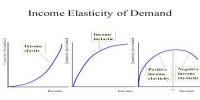Customs Duty is levied when goods are transported across borders between countries. It refers to the tax imposed on goods when they are transported across international borders. It is a kind of tax imposed upon goods” imported or exported. It is the tax that governments impose on the export and import of goods. These duties are imposed by the government on different rates. The rates of customs duties are either specific or on an ad valorem basis, that is, it is based on the value of goods. Duties, or tariffs, are either based on the value of the goods (ad valorem duties), some other factors such as weight or quantity (specific duties) or a combination of value and other factors (combined duties). While value-based duties are called Valorem duties, quantity-based duties are called specific duties. When it is levied on imported goods, it is termed import duty and the same will be known as an export duty when it is imposed on goods exported. It regulates the movement of goods in and out of the country. Depending on the context, import duty may also be known as a customs duty, tariff, import tax or import tariff.
Customs Duties are classified as follows:
- Basic Customs Duty (BCD)
- Additional Customs Duty or Special CVD
- Protective Duty
- Countervailing Duty (CVD)
- Anti-dumping Duty
- Education Cess on Custom Duty.
While revenue is a paramount consideration, Customs duties may also be levied to protect the domestic industry from foreign competition. The government uses this duty to raise its revenues, safeguard domestic industries, and regulate the movement of goods. It is beneficial for many reasons. For instance, it ensures a country’s economic stability, jobs, environment, among others. The rate of Customs duty varies depending on where the goods were made and what they were made of. To simplify it, any tariff that is introduced on goods across national borders is referred to as a customs duty.
















